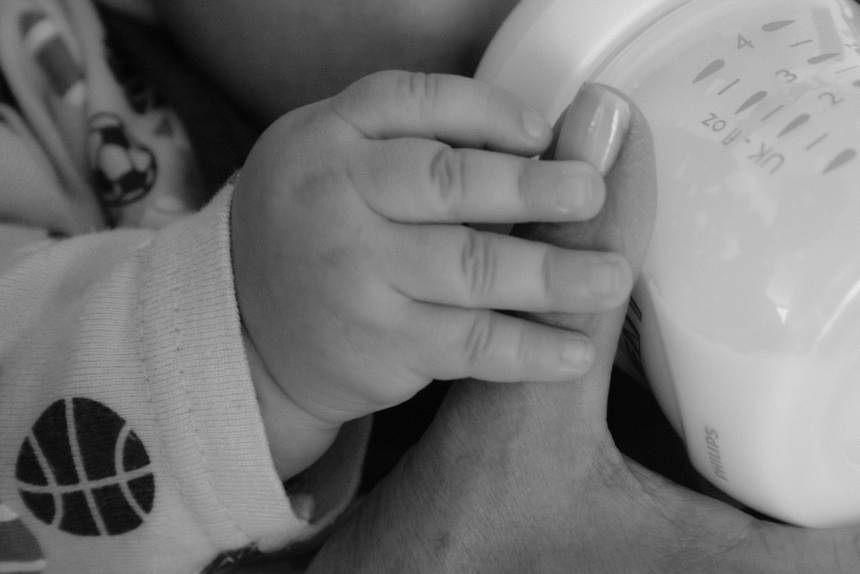If you’re the parent of a new baby, your wardrobe has likely undergone a dramatic shift. Out go the dry-clean-only silks; in come the stretchy, forgiving fabrics that can withstand the inevitable: spit-up.
That little bit of milky dribble on your shoulder is a rite of passage for most parents. But what happens when that spit-up seems more like a fountain? When your baby arches their back in pain after feeding, or seems constantly uncomfortable? You start to wonder—is this normal, or is it something we need to tackle?
As a pediatric resource, we hear this question all the time. So, let’s untangle the often-muddled topic of infant reflux, together.
The Gist of It: Reflux vs. GERD
First, let’s get our terms straight. People often use “reflux” and “GERD” interchangeably, but there’s a crucial difference.
Reflux (GER): Gastroesophageal Reflux. This is simply the mechanical process. Milk, along with stomach acid, comes back up into the esophagus. Think of it like a leaky valve. The muscle at the bottom of the esophagus (the lower esophageal sphincter) is still immature and hasn’t quite gotten the hang of keeping everything down. It’s a symptom, and a very common one. About half of all babies will have reflux in their first three months.
GERD: Gastroesophageal Reflux Disease. This is when that reflux causes complications. It’s no longer just a messy laundry problem; it’s a medical problem. The acid reflux is frequent and strong enough to irritate the esophagus, causing pain and interfering with your baby’s well-being.
The key question isn’t just “Does my baby have reflux?” (most do!). It’s “Is my baby’s reflux causing them pain or stopping them from thriving?”
The ‘Normal’ Spitty Baby: Signs of Simple Reflux
How can you tell if your little one is just a “happy spitter”? Here’s what simple, uncomplicated reflux often looks like:
- They spit up frequently, sometimes even what seems like a whole feed (it usually looks like more than it is).
• It happens during or shortly after a feeding.
• They are otherwise content. No major fussiness, crying, or apparent pain associated with it.
• They are gaining weight well and meeting their developmental milestones.
• They have wet and dirty diapers on a normal schedule.
If this sounds like your baby, you can probably breathe a sigh of relief. You have a messy, but perfectly healthy, little one. This is a process that time will almost always fix as their muscles mature and they start eating more solid foods.
The Red Flags: When Reflux Might Be GERD
This is where our parental intuition kicks in. You know your baby best. If you see a cluster of these signs, it might be time to talk to your pediatrician.
- Pain and Discomfort:
• Arching of the back and neck during or after feeds, as if trying to get away from the pain.
• Inconsolable crying for long periods, often seeming like colic.
• Frequent waking or obvious discomfort when lying flat, making sleep a struggle. - Feeding Problems:
• Refusing feeds or pulling away, even though they seem hungry.
• Gagging, choking, or constant coughing during feeds.
• A “wet hiccup” sound or gurgly voice. - Respiratory Issues:
• Recurrent wheezing or pneumonia can sometimes be linked, as stomach contents can be aspirated into the lungs. - Weight & Growth Concerns:
• Poor weight gain is a significant red flag. If the reflux is so severe that they are vomiting large amounts of their feed or associating eating with pain, they may not be taking in enough calories to grow.
If your baby is showing these signs, it doesn’t automatically mean they have GERD, but it does mean a conversation with your doctor is the very next step.
Soothing Strategies: What You Can Do at Home (Before Meds)
Whether your baby has simple reflux or something more, most pediatricians will recommend starting with diet and lifestyle changes. These are simple, safe, and often incredibly effective.
- Feed Smaller Amounts, More Frequently: A very full stomach puts a lot of pressure on that leaky valve. Smaller, more digestible meals can help.
2. Burp Thoroughly: Burp your baby during and after feeds to release air bubbles that can push milk back up.
3. Hold Upright After Feeds: Gravity is your best friend here. Try to keep your baby upright for 20-30 minutes after a feeding instead of laying them down immediately.
4. Consider Your Diet (If Breastfeeding): For some babies, proteins from the mother’s diet (most commonly cow’s milk protein) can pass into the breast milk and irritate their gut. Your doctor might suggest a trial elimination of dairy to see if it helps.
5. Check the Formula: For formula-fed babies, sometimes a change can make a difference. Some formulas are partially hydrolyzed (broken down) for easier digestion. In cases of a suspected milk protein allergy, your doctor may recommend a special hypoallergenic formula.
6. Tweak the Sleep Environment: Always put your baby to sleep on their back on a firm, flat mattress—this is non-negotiable for SIDS prevention. However, if your pediatrician diagnoses them with GERD, they might give you specific, supervised guidance, like slightly elevating the head of the entire crib mattress (not by adding pillows!) to use gravity.
When to Seek Medical Treatment
If those comforting techniques aren’t making a dent and your baby is still struggling, it’s time to go back to the doctor. Treatment is not about just stopping spit-up; it’s about improving your baby’s quality of life.
Doctors may consider medications in specific cases. These are typically acid-blocking medications that reduce the acidity of the stomach contents, so if they do come up, they are less painful and irritating. It’s crucial to remember that these medications don’t stop the reflux—they just make it less acidic.
Important: These medications can have side effects and are only recommended for babies with true, diagnosed GERD where the benefits outweigh the risks. They are not a magic bullet for every fussy, spitty baby.
The Light at the End of the Tunnel
However you and your pediatrician decide to manage your baby’s reflux, please hold onto this one, comforting truth: This is almost always a phase.
As your baby grows, their esophageal muscle will strengthen. They’ll start sitting up, eating solid foods, and spending more time upright. All of these things dramatically improve reflux. By their first birthday, the vast majority of babies have left their reflux far behind them.
In the meantime, trust your gut. You are the expert on your child. If something feels wrong, advocate for them. Ask the questions. Seek the second opinion. Your job isn’t to have all the answers, but to find the person who can help you get them. And stock up on those burp cloths. This, too, shall pass—even if it sometimes feels like it’s passing all over your favorite shirt.









